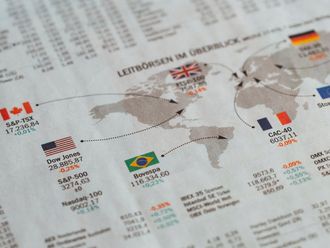
Dubai: Global credit rating agency Standard & Poor's is reviewing the ratings of 50 banks in the Middle East based on a new set of rating criteria adopted by the agency recently.
"We look at 25 banks in the GCC region. We also rate banks in Tunisia, Egypt Jordan, and Leban-on, so across Mena, we look at 50 credits," said Timucin Engin, Associate Director, Rating Analytical, Financial Institutions at Standard & Poor's.
S&P revised its financial institutions rating methodology and distributed it to the market on November 9.
"We began the review of all global banking ratings under the new criteria and plan to finalise it by year end. Under these criteria, we will also be reviewing our regional credits," said Engin.
Asset quality problems
S&P said last month they would gradually roll out the updated ratings for more than 750 banking companies worldwide, starting with an announcement about the biggest banks.
Under the new criteria, last month the rating agency downgraded a number of large financial institutions, including Bank of America Corp, Barclays and Citigroup, citing a new methodology that reflects weaker confidence in governments' willingness and ability to bail out banks in trouble.
In S&P's recently revised Banking Industry Country Risk Assessments (Bicras), the rating agency has classified Bahrain's banking system in Group 6, which is the highest risk among the GCC countries, ahead of the UAE (Group 5), Oman, Qatar, and Kuwait (Group 4) and Saudi Arabia (the strongest, in Group 2).
Improved loans-to-deposit ratios and high capitalisation levels are seen as the core strengths of the UAE banking sector. With low external borrowing levels, analysts say banks' own refinancing requirements are manageable.
"The banking system's net external borrowings have fallen over the past few years and we believe the refinancing requirements of the local banks are largely manageable, particularly for Abu Dhabi institutions," Engin said last month.
Analysts say UAE banks could face future asset quality challenges from restructured loans.
"The significant increase in the renegotiated private sector loans hides the true extent of the banks' asset quality problems… Some of these loans may re-emerge as non-performing loans," rating agency Fitch said in a recent review of the UAE's banking sector.
S&P recently expressed its satisfaction on the overall capitalisation levels of Gulf banks that are significantly higher than the new Basel III requirements and the composition of bank capital in the GCC is generally of high quality.
Concerns
Independent analysts said in countries such as Egypt and Lebanon, the banking sector could face negative rating action. Last month rating agency Moody's downgraded five of Egypt's biggest banks amid concerns over their large holdings of its sovereign debt and the transitional government's ability to support banking system.
Earlier this month, Moody's changed its outlook for Lebanon's banking system to negative from stable. The agency cited slower economic growth, following a sharp GDP deceleration in H1 2011; downside economic risks due to regional political uncertainty as the main reasons.












